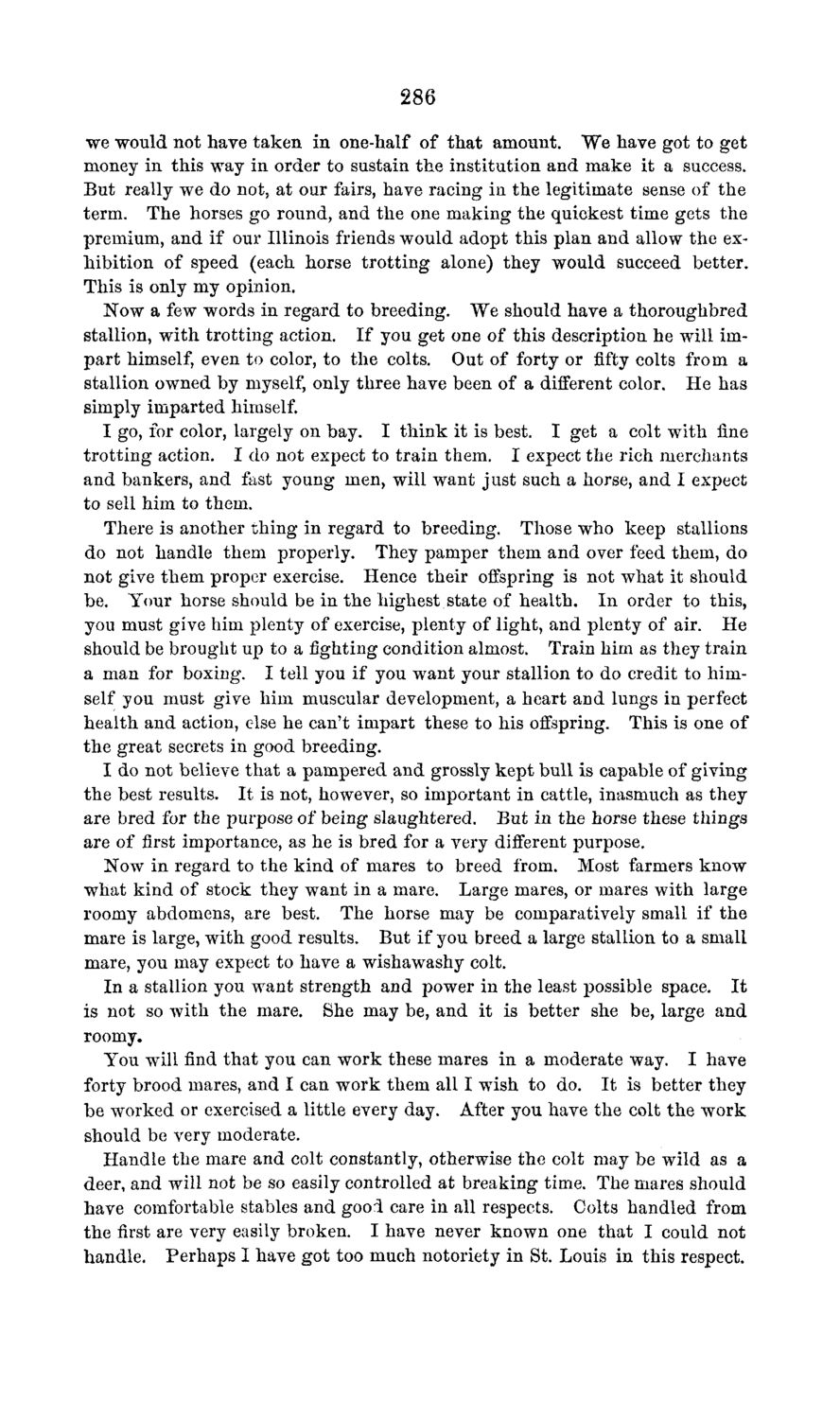| |
| |
Caption: Board of Trustees Minutes - 1869
This is a reduced-resolution page image for fast online browsing.

EXTRACTED TEXT FROM PAGE:
286 we would not have taken in one-half of that amount. We have got to get money in this way in order to sustain the institution and make it a success. But really we do not, at our fairs, have racing in the legitimate sense of the term. The horses go round, and the one making the quickest time gets the premium, and if our Illinois friends would adopt this plan and allow the exhibition of speed (each horse trotting alone) they would succeed better. This is only my opinion. Now a few words in regard to breeding. We should have a thoroughbred stallion, with trotting action. If you get one of this description he will impart himself, even to color, to the colts. Out of forty or fifty colts from a stallion owned by myself, only three have been of a different color. He has simply imparted himself. I go, for color, largely on bay. I think it is best. I get a colt with fine trotting action. I do not expect to train them. I expect the rich merchants and bankers, and fast young men, will want just such a horse, and I expect to sell him to them. There is another thing in regard to breeding. Those who keep stallions do not handle them properly. They pamper them and over feed them, do not give them proper exercise. Hence their offspring is not what it should be. Your horse should be in the highest state of health. In order to this, you must give him plenty of exercise, plenty of light, and plenty of air. He should be brought up to a fighting condition almost. Train him as they train a man for boxing. I tell you if you want your stallion to do credit to himself you must give him muscular development, a heart and lungs in perfect health and action, else he can't impart these to his offspring. This is one of the great secrets in good breeding. I do not believe that a pampered and grossly kept bull is capable of giving the best results. It is not, however, so important in cattle, inasmuch as they are bred for the purpose of being slaughtered. But in the horse these things are of first importance, as he is bred for a very different purpose. Now in regard to the kind of mares to breed from. Most farmers know what kind of stock they want in a mare. Large mares, or mares with large roomy abdomens, are best. The horse may be comparatively small if the mare is large, with good results. But if you breed a large stallion to a small mare, you may expect to have a wishawashy colt. In a stallion you want strength and power in the least possible space. It is not so with the mare. She may be, and it is better she be, large and roomy. You will find that you can work these mares in a moderate way. I have forty brood mares, and I can work them all I wish to do. It is better they be worked or exercised a little every day. After you have the colt the work should be very moderate. Handle the mare and colt constantly, otherwise the colt may be wild as a deer, and will not be so easily controlled at breaking time. The mares should have comfortable stables and good care in all respects. Colts handled from the first are very easily broken. I have never known one that I could not handle. Perhaps I have got too much notoriety in St. Louis in this respect.
| |